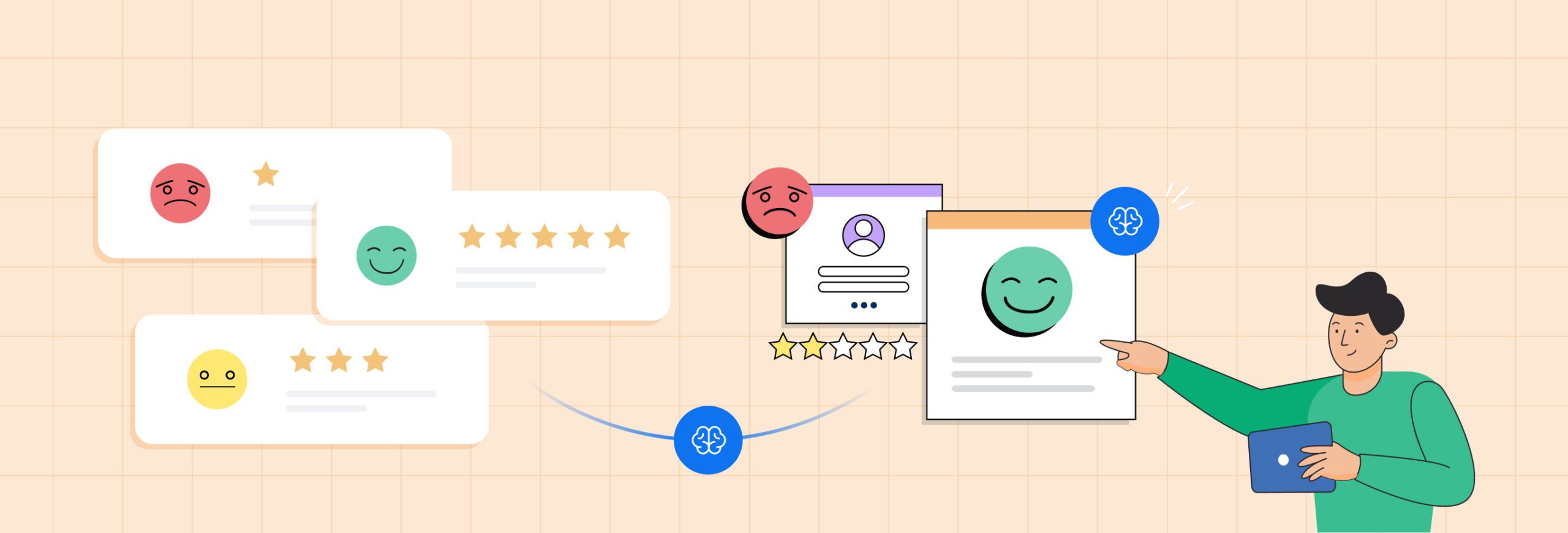Employee surveys are powerful tools for measuring employee sentiment, identifying opportunities for improvement, and promoting a culture of engagement. However, listening is not enough. To truly unlock employee potential, organizations must bridge the gap between listening and taking action. This blog post explores the importance of bridging this gap and provides insights on how companies can turn employee feedback into concrete actions.

With the advancements in Generative AI, organizations can now leverage natural language processing models to analyze vast amounts of employee feedback and extract valuable insights. By utilizing these Generative AI-powered tools, companies can gain a deeper understanding of employee sentiments and identify key areas for improvement more efficiently.
The Importance of Ongoing Employee Listening
By actively soliciting and respecting employee feedback, companies demonstrate their commitment to creating a positive work environment. Employee feedback provides valuable insight into areas such as job satisfaction, work-life balance, leadership effectiveness, and organizational culture.
Through sentiment analysis, Generative AI algorithms can assess the emotional tone of employee feedback and categorize it into positive, negative, or neutral sentiments. This helps organizations identify specific pain points or areas of success within their workforce, enabling targeted action plans and interventions.
As the workplace is constantly changing, the employee listening program has evolved from a one-time or semi-annual activity to an ongoing one. We are all experiencing a paradigm shift in the workplace following the COVID-19 pandemic. Most of us seem to have found our true calling at work or outside of work. Employee priorities are changing in response to rapidly evolving technology and geopolitical conditions. Today’s employees expect companies to constantly monitor almost anything that affects them. Needless to say, continuous listening helps organizations change faster and take agile actions to stay ahead of the market and competitors.
Generative AI-powered employee listening platforms can facilitate real-time data collection and analysis, allowing organizations to stay connected with their employees continuously. These platforms can provide automated alerts and insights based on employee feedback, enabling companies to address emerging issues promptly and make data-driven decisions.
Bridging the Gap: From Listening to Action
Create a clear feedback loop

Establishing a structured feedback loop is critical to bridging the gap between employee listening and action. This includes mechanisms for collecting employee feedback, analyzing it, and communicating the results transparently. Before investing in an employee feedback solution, we recommend looking for a solution that offers robust action planning workflows that help you conduct due diligence and automate the entire process from start to finish. Automating action plan initiatives is a surefire way to incorporate employee input programs.
Generative AI-powered feedback platforms can streamline the feedback collection process by automatically organizing and categorizing employee responses. Natural language processing algorithms can identify recurring themes and topics, providing a comprehensive overview of the most relevant issues employees raise. This allows organizations to allocate resources effectively and prioritize action plans accordingly.
Employee feedback as a leadership tool
Leadership plays a key role in driving change based on employee feedback. When leaders actively participate in the feedback process, it sends a strong signal to employees that their opinions are valued and acted upon. Leaders must communicate a commitment to action, set clear expectations, and allocate resources accordingly. Has he identified a leader or two to serve as “the brand ambassadors” for the employee listening program?
Generative AI-powered sentiment analysis can help leaders gauge the overall satisfaction levels and sentiment trends among their employees. By having access to real-time insights, leaders can proactively address concerns, provide timely support, and foster a culture of open communication and trust.
Prioritize feedback and act on it

It’s important to prioritize the feedback you receive and identify key areas that need immediate attention. This includes analyzing feedback data, identifying patterns, and identifying the most important issues. Use a simple 2*2 matrix to plot effort vs. impact to help guide your decisions. This is perhaps the most neglected component of continuous employee listening programs, as organizations are ill-equipped to meaningfully process the vast amounts of employee opinion data. We encourage introspection and assess your readiness under People, Process, and Technology elements.
Generative AI-powered data analytics can assist in prioritizing feedback by automatically identifying trends, patterns, and correlations within the feedback data. By leveraging machine learning algorithms, organizations can gain actionable insights from employee feedback more efficiently, enabling them to focus on the areas that have the highest potential impact on employee satisfaction and organizational performance.
Communicate and celebrate the wins
Regularly tracking the progress of the implemented actions is crucial to ensure that the desired outcomes are achieved. Transparently communicate the progress to employees, sharing the positive changes that have resulted from their feedback. This fosters a sense of ownership and encourages ongoing participation in the feedback process.
Generative AI-generated reports and visualizations can simplify the communication of progress to employees. These tools can automatically compile data, highlight key achievements, and present them in a visually appealing and easily understandable format. Such AI-generated reports can be shared with employees via dashboards or interactive platforms, enhancing transparency and engagement.
Conclusion
By actively listening to employees, companies gain valuable insights that lead to increased productivity, innovation, and overall employee satisfaction. Forward-thinking companies also use employee surveys to understand market trends and customer preferences to gain a strategic advantage. Regardless of the platform, it is your ability to turn employee feedback into concrete actions that really make a difference.
With the help of Generative AI, organizations can now analyze employee feedback at scale, uncovering nuanced insights that may have been previously overlooked. By harnessing the power of AI, companies can unlock hidden patterns and correlations within employee feedback data, enabling them to make data-driven decisions that drive meaningful change and improve organizational success.

By executing the recommended strategies outlined in this blog post, organizations can close gaps, and harness the power of listening to their employees to drive meaningful change and drive continuous improvement and organizational success.
Looking ahead, the integration of Generative AI and employee listening programs hold great promise. AI-powered chatbots and virtual assistants can provide personalized support and guidance to employees, facilitating ongoing feedback and engagement. Furthermore, machine learning algorithms can continuously learn from employee feedback data, refining their insights and recommendations over time, leading to more effective action planning and decision-making.
As the work landscape continues to evolve, organizations that embrace the power of Generative AI in their employee listening initiatives will be well-positioned to adapt, thrive, and create a workplace that truly values and empowers its employees.






